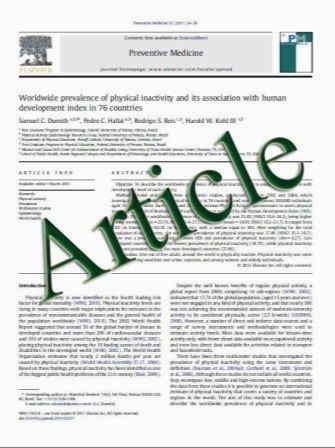Spine–hip discordance and fracture risk assessment: a physician-friendly FRAX enhancement
- نوع فایل : کتاب
- زبان : انگلیسی
- مؤلف : W. D. Leslie & L. M. Lix & H. Johansson & A. Oden & E. McCloskey & J. A. Kanis
- چاپ و سال / کشور: 2010
Description
Summary The FRAX® tool estimates a 10-year probability of fracture based upon multiple clinical risk factors and an optional bone mineral density (BMD) measurement obtained from the femoral neck. We describe a simple procedure for using lumbar spine BMD to enhance fracture risk assessment under the FRAX system. Introduction Discordance between lumbar spine (LS) and femoral neck (FN) T-scores is common and a source of clinical confusion since the LS measurement is not an input variable for the FRAX algorithm. The purpose of this study is to develop a procedure for adjusting FRAX probability based upon the T-score difference between the LS and FN (termed offset). Methods The Manitoba BMD database was used to identify baseline LS and FN dual-energy X-ray absorptiometry examinations (33,850 women and 2,518 men age 50 and older) with FRAX estimates for a major osteoporotic fracture categorized as low (<10%), moderate (10–20%), and high (>20%). Fracture outcomes were assessed from population-based administrative data. An approach was developed and internally validated using a split-cohort design. Results The offset was found to significantly affect fracture risk [HR, 1.12 (95% CI, 1.06–1.18) per SD LS below FN] independent of the FRAX probability. The following rule was formulated: “Increase/decrease FRAX estimate for a major fracture by one tenth for each rounded T-score difference between LS and FN.” In the validation subgroup, there was a significant improvement in the fracture prediction using FRAX with the proposed offset adjustment for major osteoporotic (P=0.007) and vertebral fracture prediction (P<0.001). For those at moderate risk under FRAX, 12.6% showed reclassification using the offset to a risk level that more accurately reflected their observed risk (25.2% reclassification for moderate risk discordant cases). Conclusion A simple procedure that incorporates the offset between the LS and FN T-scores can enhance fracture risk prediction under the FRAX system.
Osteoporos Int (2011) 22:839–847 DOI 10.1007/s00198-010-1461-5 Received: 6 August 2010 / Accepted: 24 September 2010 / Published online: 20 October 2010


